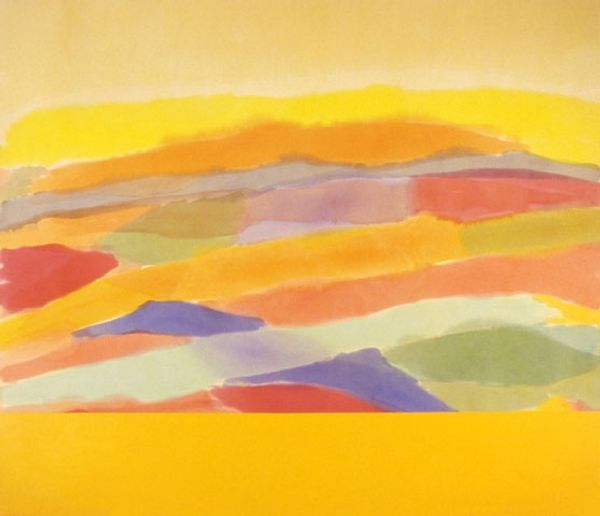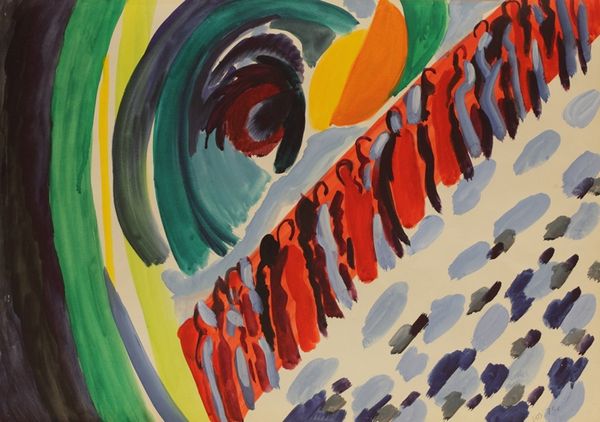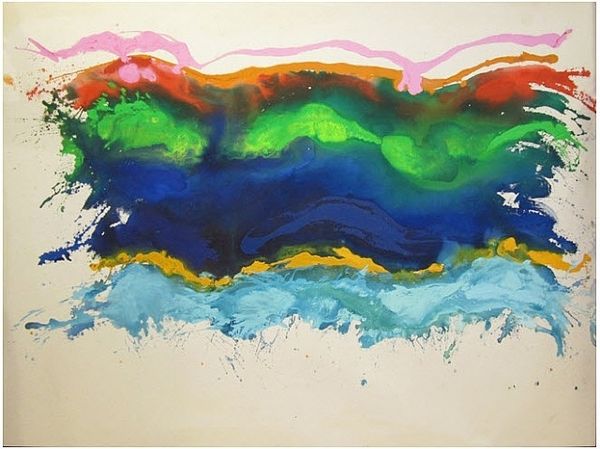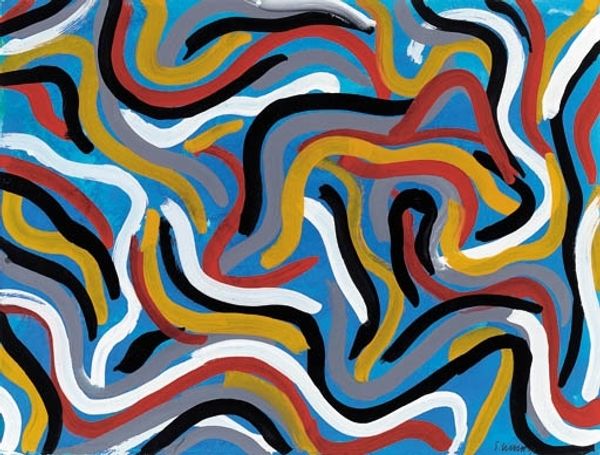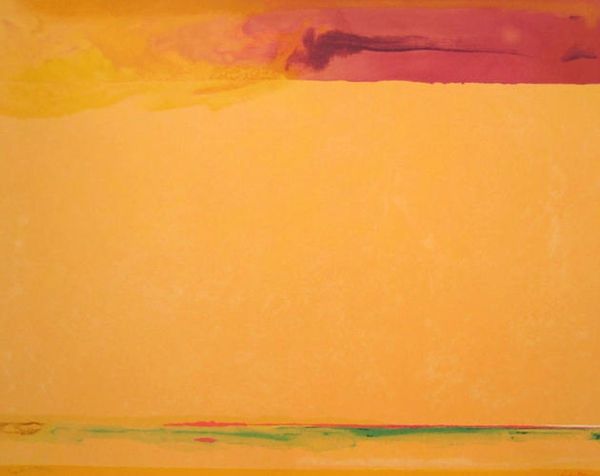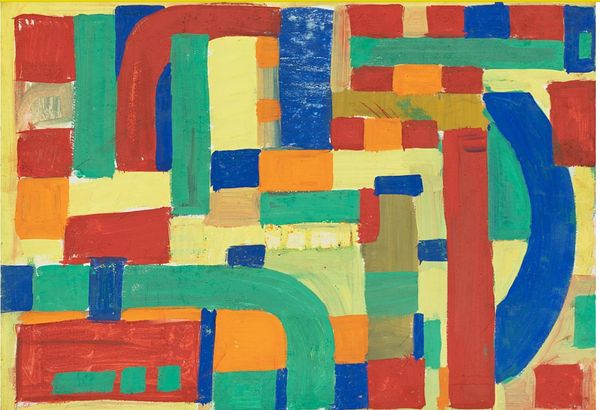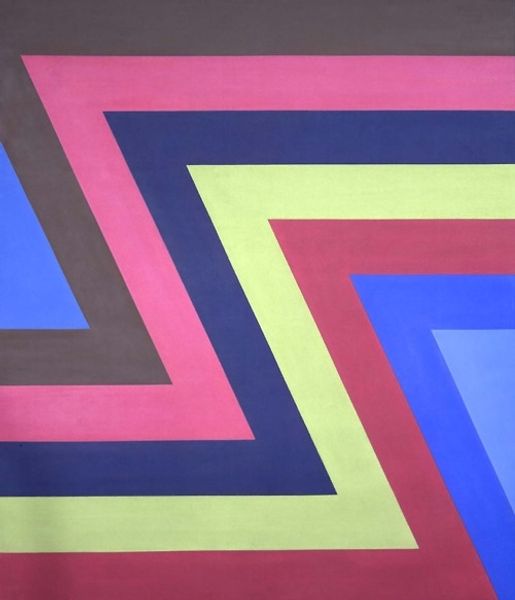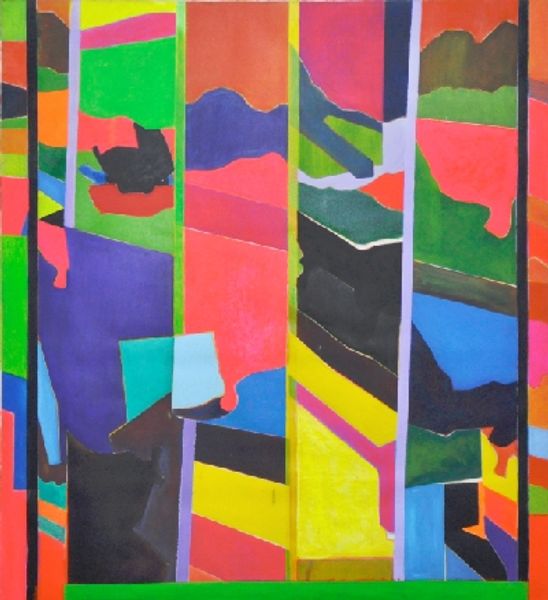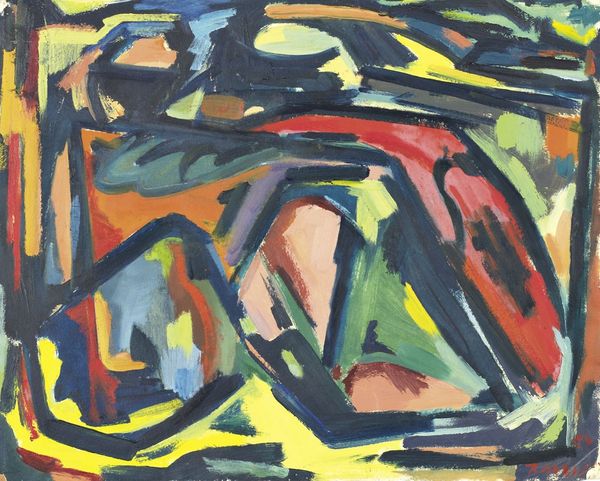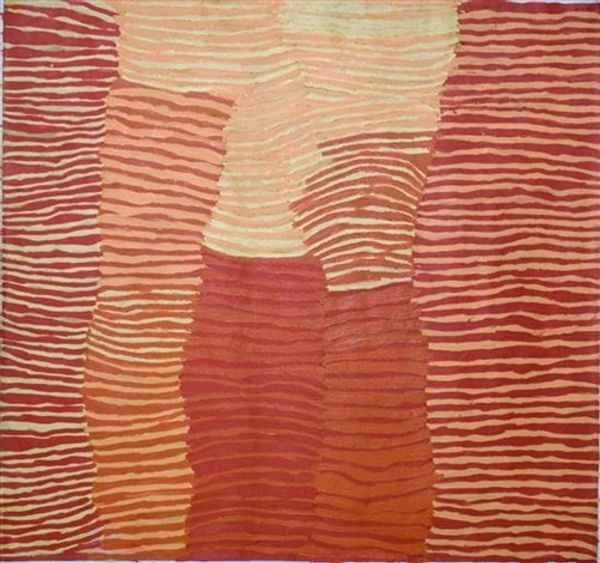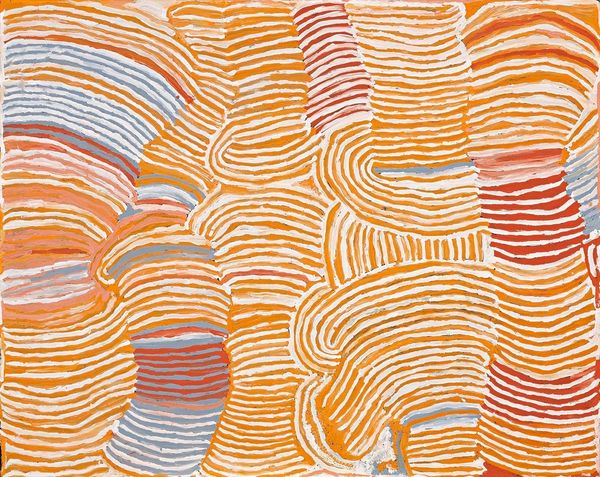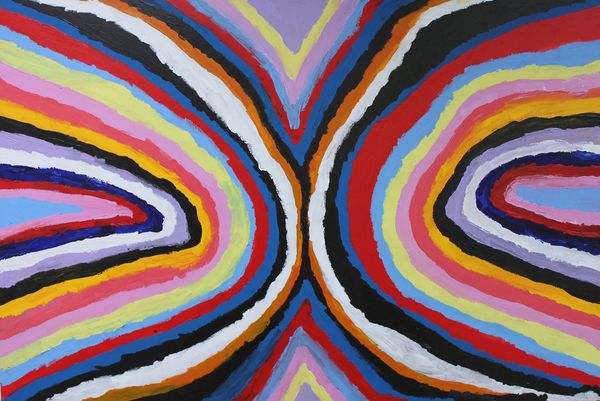
Copyright: Public Domain: Artvee
Curator: This is Karl Wiener's "Andante," created around 1928. It’s a watercolor piece embodying both abstract expressionism and a clear engagement with colour-field painting. Editor: My first impression is pure, unadulterated joy. The colors are so vibrant, almost playful. The lines, although abstract, suggest a landscape, maybe even a dreamscape. It seems so hopeful, in a world increasingly turning away from this promise. Curator: It's interesting you see a dreamscape. Wiener, emerging from a generation deeply scarred by war, explores a geometric abstraction hinting at utopian possibility, where vibrant color could redefine shared social space, almost like a reclamation. What does the composition suggest to you formally? Editor: Structurally, the painting operates through rhythmic repetition of horizontal bands, the colours are layered tonally giving depth, there's also a bold interplay of curved versus straight lines which is very effective, particularly where they collide, creating both harmony and tension. There’s something fundamentally musical in the arrangement – and very telling considering its title. Curator: Precisely. "Andante" refers to a moderate tempo in music. Wiener, positioned between worlds devastated by conflict, sought refuge in a balanced, optimistic vision, with social progress embedded within each flowing horizontal line, each color gradient representing layers of society intertwined towards unity. This piece then, transcends aestheticism; it is Wiener’s attempt to reconstruct fractured identities around a unified and inclusive society. Editor: I concur about Wiener reconstructing identities—we observe how color field applications intersect to create an artistic dialogue. Although this artistic statement stands on its own merits, there is a clear structural and conceptual nod to a modern, geometric consciousness – a very refreshing take away in relation to utopian form. Curator: Absolutely, and understanding that social ambition allows a deeper understanding of Wiener’s commitment beyond pure aesthetics. "Andante" becomes an invocation, not merely a visual expression but a statement on potential futures. Editor: Indeed. Examining Wiener's masterful articulation between form and the human element elevates the work beyond abstraction. This offers more than art appreciation—it encourages a vital discourse on aspiration and hope in times of social strife.
Comments
No comments
Be the first to comment and join the conversation on the ultimate creative platform.
